Finding Foodie Fun on Route One
Seaweed Foraging, Farm Living, and Restaurant Jumping Up the Central Coast
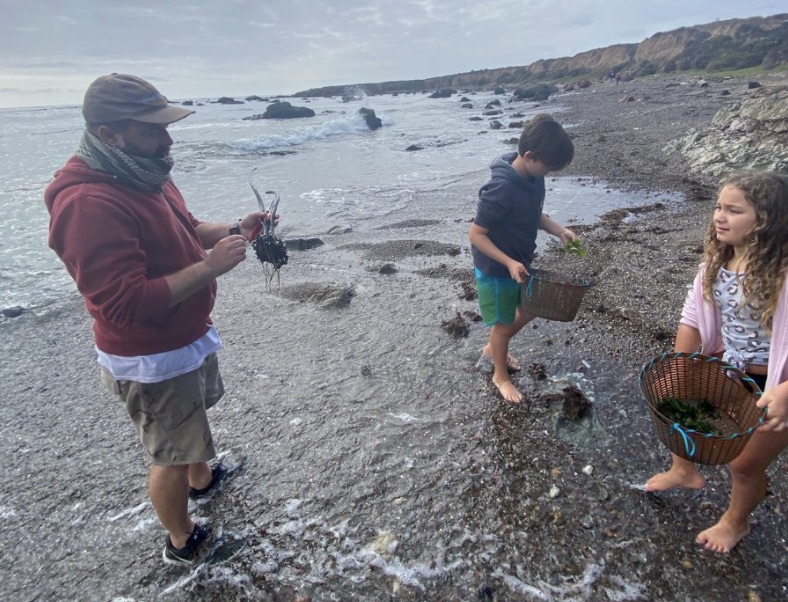
It’s an overcast October afternoon on the coast just north of Cayucos, and my family is stepping through brisk, knee-deep water, snagging wispy pieces of seaweed as they float by on gently lapping waves.
“All you have to do is walk around the tide pools, and all of these fresh ocean veggies are just washing in,” explains our guide Spencer Marley, founder of Marley Family Seaweeds. He’s teaching us about “glean harvesting,” which simply collects what’s freshly been ripped off reefs and rocks by the currents, compared to more intensive aquaculture techniques. In addition to his job at Cal Poly, Marley leads these private tours and harvests seaweed commercially, selling his traditionally dried products at nearby farmers’ markets.
Minutes later, with a variety of crisp, savory seaweeds in our colanders, Marley is heating up onion, garlic, soy, and water in a pot on the beach along with leathery strips of kombu, which will be yanked out before eating. “It’s like the chicken stock of Japan,” said Marley, who grew fond of Japanese cuisine while growing up in San Jose, discovering nori wraps, ramen bowls, and other dishes that relied on seaweed for both nutrition and an umami kick. “I found out that the same species exist out here.”
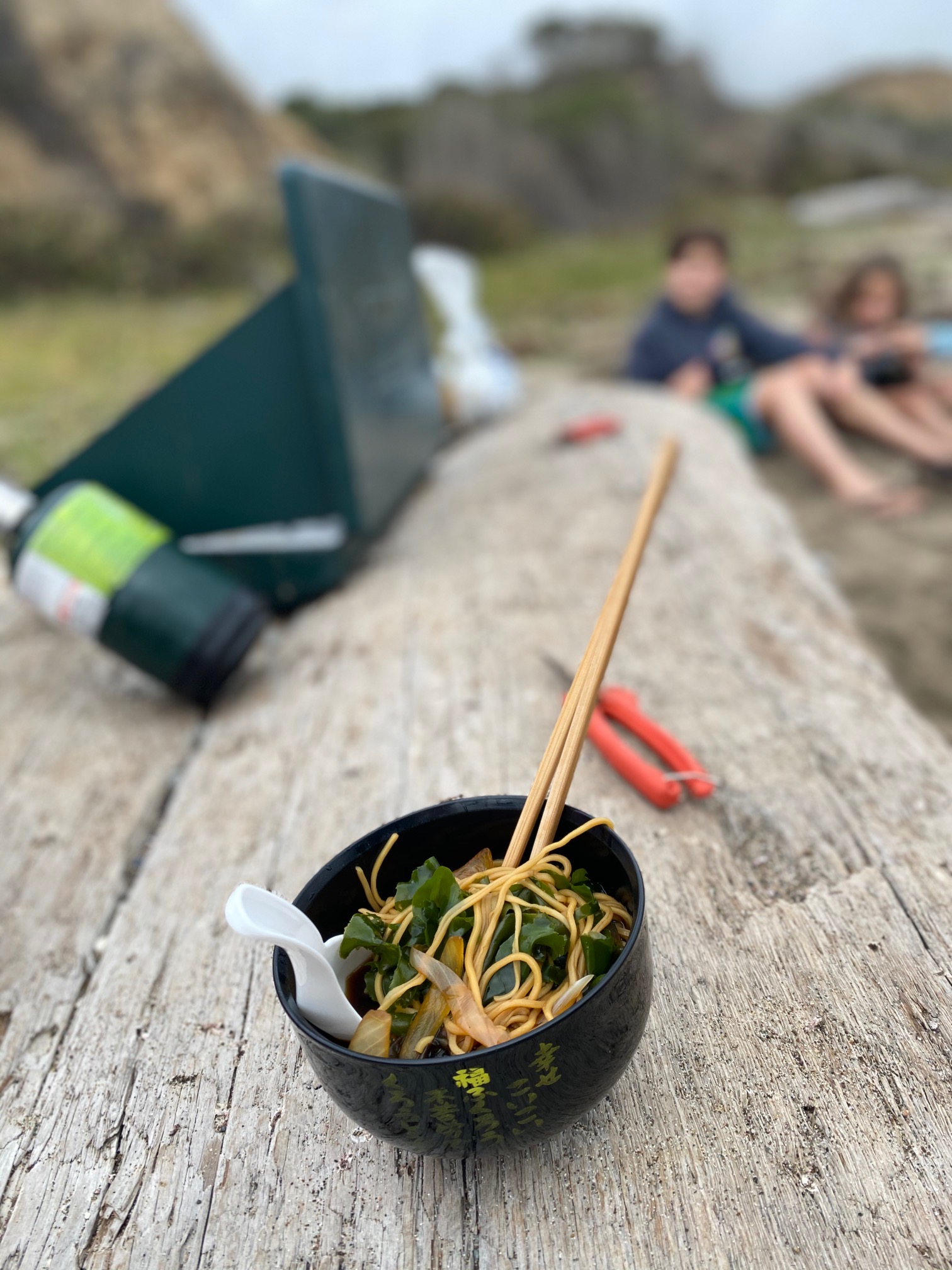
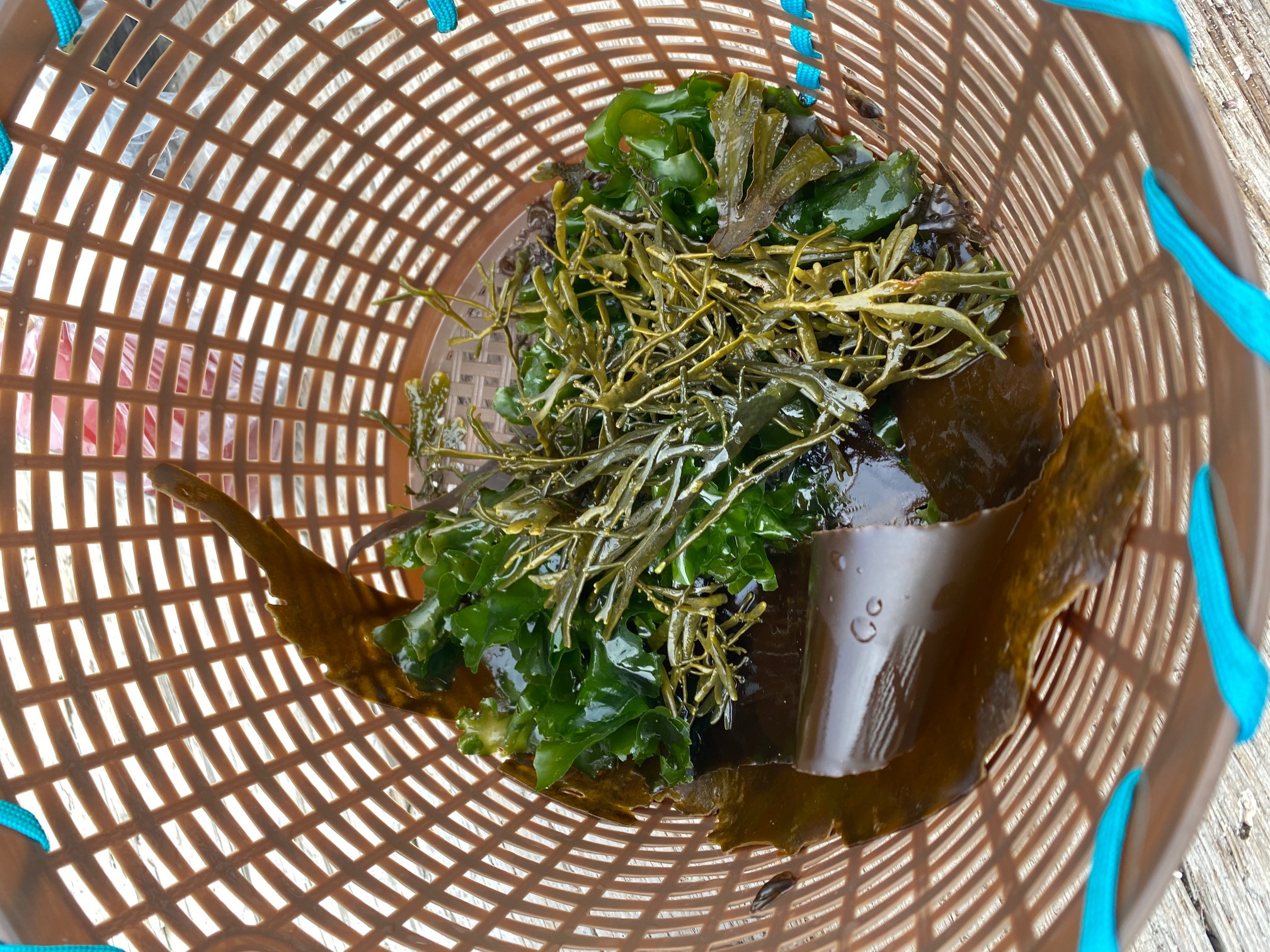
Mersea’s serves seafood on the Harford Pier overlooking Avila Beach.
Credit: Matt Kettmann
Then Marley tosses in the rest of our harvest, much of which are just like weeds that have also been eaten in Ireland, France, the Caribbean, and elsewhere for centuries. “That’s the cool thing about seaweed,” said Marley, who’s found a handful that taste good and can be reliably found on the Central Coast. “There are no toxic varieties.” (Don’t eat any grown in polluted waters, though.)
The last ingredient dropped into the pot are the noodles, and we’re suddenly warming up to the briny flavors of ramen while sitting on sandy logs and rocks, looking out over this intertidal zone, whose easy-to-enjoy bounty is news to us. For a few minutes, we forget about the coronavirus, lost in between slurps and lessons about the sea.
Pies and Clydesdales
Indeed, forgetting about the pandemic, wildfires, and all else that transpired in 2020 was the point of this 48-hour escape to San Luis Obispo County. After having vacations in Spain, New Orleans, Oregon, and even Shaver Lake canceled in 2020, heading somewhere close with just the four of us seemed like the safest getaway medicine. We were further encouraged by an earlier escape to Cambria with our close friends a couple of months before — highlights included Stolo Vineyards’ gamy syrah and zesty gewürztraminer just behind Cambria; zebra-, elephant-seal-, and elk-spotting along Highway 1; and secret creek-meet-beach swim sessions up toward Big Sur.
Our first stop on this return trip was for lunch at Linn’s of Cambria, one of the better-known eateries on the entire Central Coast, famous for pies, soups, and other comfort foods made with ingredients from their family farm. “We try to grow a little bit of a lot of different things,” explained Aaron Linn, listing lettuces, heirloom tomatoes, avocados, cilantro, apples, plums, pomegranate, and much more.

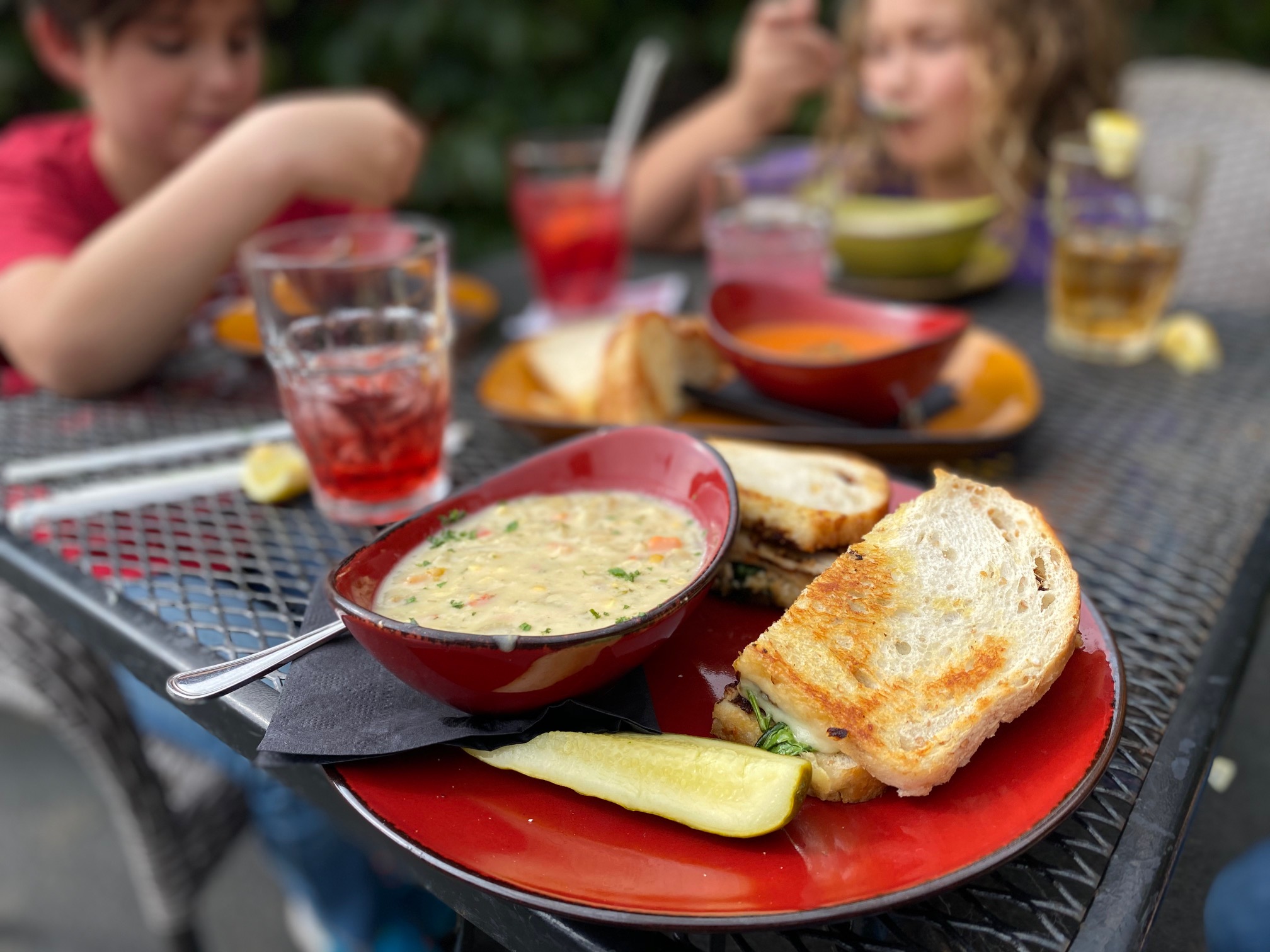
Olallieberry pie follows turkey melt, corn chowder, and more for lunch at Linn’s of Cambria.
Credit: Matt Kettmann
As he outlined favorites from the menu — we opted for tomato bisque, clam chowder, turkey melts, and lemonade with olallieberry (plus pie), which prompted a pronunciation debate — his mother, Renee, pulled up in her minivan to restock the market. “She started the show,” said Linn of his mom, who bought the farm with his dad, John, back in 1976. “We’re happy she’s still involved.” It grew into a pick-your-own farm called Linn’s Fruit Bin, and that led to the restaurant business in 1989, which is now a mini-empire, with a café, a bakery, and gourmet shops occupying much of downtown Cambria.
After lunch, we drove up the hill for a brief walk around the Cambria Cemetery, where old Irish and English settler names from the 1880s and ’90s mingled with crumbling gravestones that merely said “Lost in Names, But Not in Spirit.” It’s a spot for contemplative walking, certain to get a bit spooky come sundown.
But our true destination was Covell’s Clydesdales, where we were greeted by Tara Covell, whose dad, a former Southern California roofing company owner named Ralph Covell, has been breeding Clydesdales for 40 years. Five years ago, she started the horseback tour business, leading guests atop these stately beasts across her family’s 2,000 acres of Monterey pine forest and oak scrubland.

Clydesdales require a different riding technique than smaller horses, but it was easy enough that even my 8-year-old daughter had her horse trotting within minutes. As I enjoyed views into San Simeon Bay and tried to find Hearst Castle poking through the gray clouds, my kids laughed riotously at the steady flatulence and mid-stride disposal techniques of the horses. It was far more likely that their chuckling was more likely to cause a fall than anything these extremely gentle animals would do.
For dinner, we went with the ever-reliable Robin’s Restaurant, whose fresh mix of Pan-Asian-Californian fusion cuisine pairs well with downtown Cambria’s colorful cottage vibes and salty air. Refreshing sips of Bristols Cider from Atascadero offset the intriguing funk of the pickled kimchi appetizer while a glass of El Lugar pinot noir from the Rincon Vineyard in Arroyo Grande matched the spice of my curry dish.
That night, we stayed up the coast at the Cavalier Oceanfront Resort, which sits right atop the beach. During an evening walk around the grassy grounds, which include fire pits, oversized chess boards, and beach badminton courts, we saw that the property features seaside rooms with outdoors patios. But we stayed in one of the slender, thin-walled, motel-like rooms closer to the highway, which my son and I ditched before dawn for a sunrise walk along the shore.

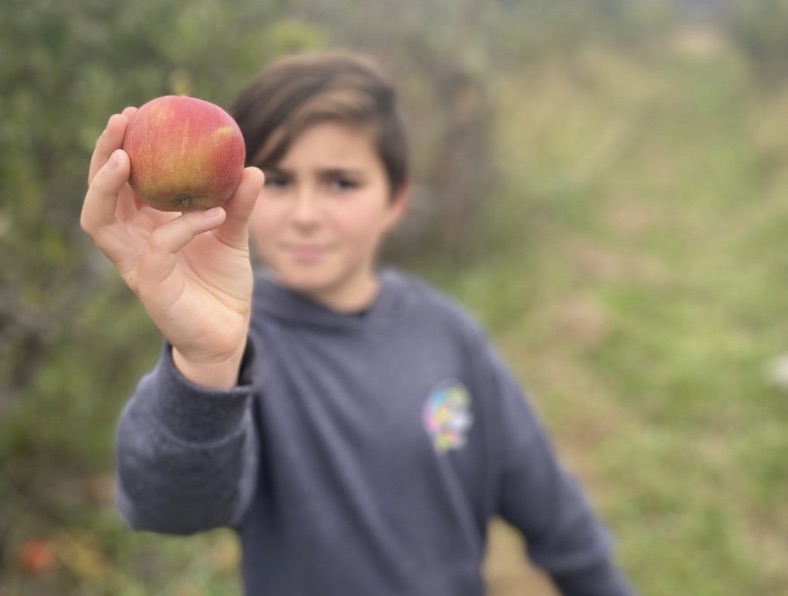
Joanna, Madeline, and Mason show off their haul at SLO Creek Farms.
Credit: Matt Kettmann
Apples, Avila, and Oils
We headed inland through San Luis Obispo for our morning adventure, pulling into S.L.O Creek Farms just as it opened. During the fall, the main draw to this highway-side property is the apple orchards, where Braeburns dominate but Granny Smith and Royal Gold varieties can also be plucked from the trees. We managed to find all three and then shopped for farm-made cider, edible flowers, and honey in the outdoor boutique.
We had a little time to kill before our seaweed adventure, so we stopped at Central Coast Brewing Company on the industrial edge of San Luis Obispo for lunch. The brews were great — the flavored ones showed restraint, while they pour one of the better helles beers I’ve ever tasted in America — as was the back patio, beneath an old grapefruit tree and next to a shady creek.

Following the seaweed foraging at Estero Bluffs that afternoon, we pulled into the Bee’s Knees Fruit Farm, located in that pleasantly rural valley between Los Osos and S.L.O. As my wife and I unloaded the bags for our stay in the farm’s sprawling cottage, the kids ran off to say hi to the chickens and ducks. Inside, we found a Victorian-esque decor very common in farmhouse design, yet with each room completely updated in modern comforts and technologies. Such a combination is quite rare.
For dinner, we played guinea pigs for the farm’s new program of delivering you seafood from Giovanni’s Fish Market in Morro Bay (or locally raised meats) and then letting you loose in their kitchen, which is loaded with produce (even pepino!), spices, and most everything you’d need to succeed. Feeling a bit like I was on Iron Chef, I threw a pine-nut-cracker crust on the halibut and sautéed the salmon in a mix of herbs, shallot, and garlic, all while sipping on Ryan Deovlet’s orange-pink-hued pinot grigio ramato.
To burn off such indulgence the next morning, we drove through Avila Beach and into the parking lot of Port San Luis Bay, where kayaks awaited us at Avila Beach Paddlesports. Though she studied marine biology, my wife is not the bravest seafarer, but we managed to coax her onto the boat and out to sea, where the bay’s breakwater keeps things incredibly mellow. We cut through the one-inch swell to land on the beach below the Point San Luis Lighthouse, where we walked up the hill to swing from a towering tree and explore the structures that surround the beacon, which was built in 1890.

Back on the calm water, we paddled past sea lions, terns, pelicans, cormorants, dolphins, and perhaps even a puffin of some sort before passing beneath Mersea’s on the Harford Pier, our lunch destination. Built about five years ago after epic rounds of negotiations with the Port San Luis Harbor District, the place was abuzz with seafood fans of all ages, all taking in sweeping views of the coast while swallowing oysters and chewing crab melts. Whether the historic Olde Port Inn, which closed a year ago, ever opens again is unclear, but Mersea’s provides an affordable means of enjoying this timeless maritime scene.
On the way out of town, we pulled off toward Edna Valley and then up a sandy ridge toward Tiber Canyon Ranch, where Chris Anderson and Will Carlton have turned their 1,500 olive trees into oil for nearly 15 years. They bought the property 25 years ago, when it was more known for fossil-fuel extraction. “We’ve brought a kinder, gentler oil to Tiber Canyon,” said Carlton, previously a renowned glass artist. The property is now popular for weddings, but their citrus-infused oils compete for even broader attention.
“They’re married at the mills,” said Carlton of the citrus and oil concoctions, as we purchased large cans of Meyer lemon olive oil and yuzu balsamic vinegar. Happily, I still have a little bit left of each, frequently drizzling judicious amounts on bread, salads, and sautés. They’re zesty reminders of our short getaway during this troubling time, when we could forget a little bit about the greater world for just a couple of easy days.
This trip was largely organized by Highway 1 Discovery Route, which is promoting a January-February 2021 “Season of Coastal Discovery” here.
Every day, the staff of the Santa Barbara Independent works hard to sort out truth from rumor and keep you informed of what’s happening across the entire Santa Barbara community. Now there’s a way to directly enable these efforts. Support the Independent by making a direct contribution or with a subscription to Indy+.




You must be logged in to post a comment.